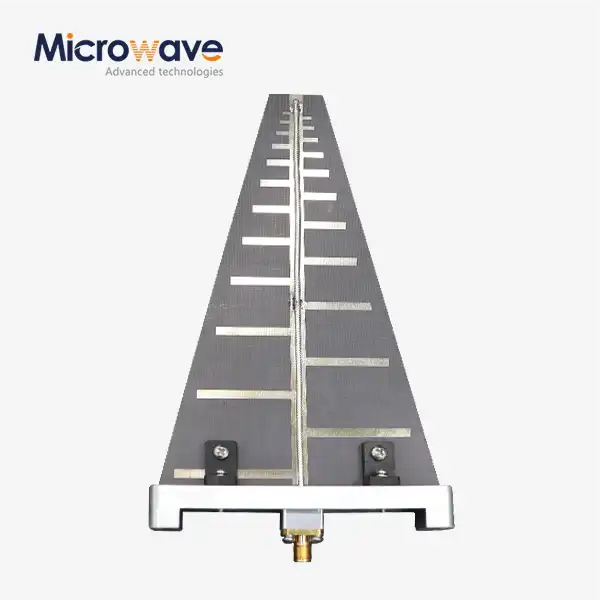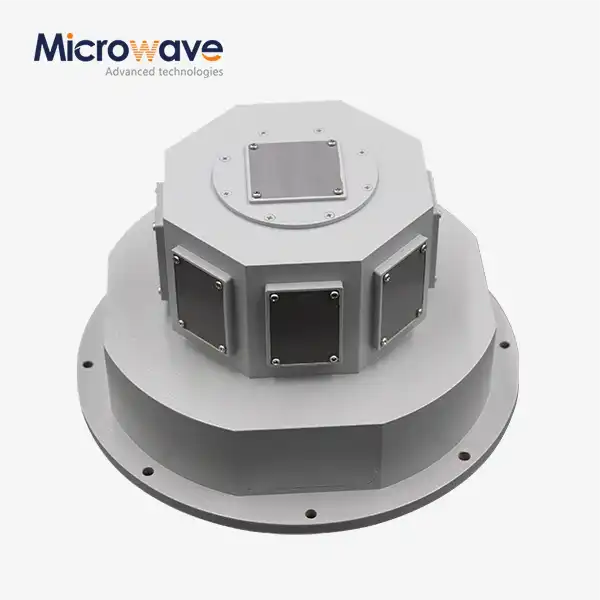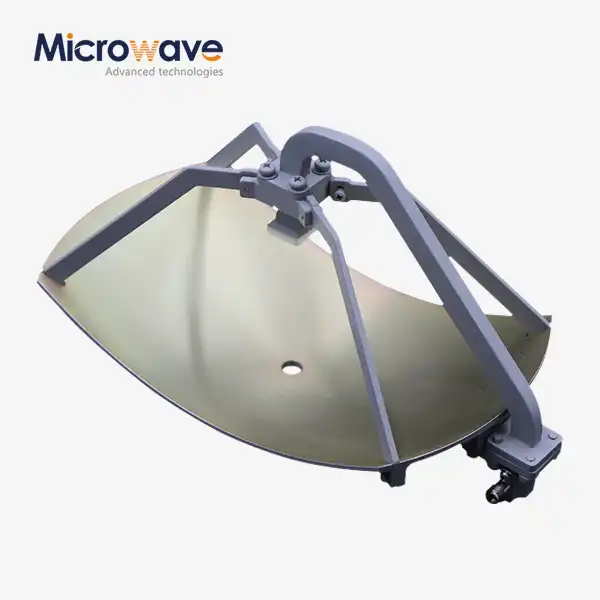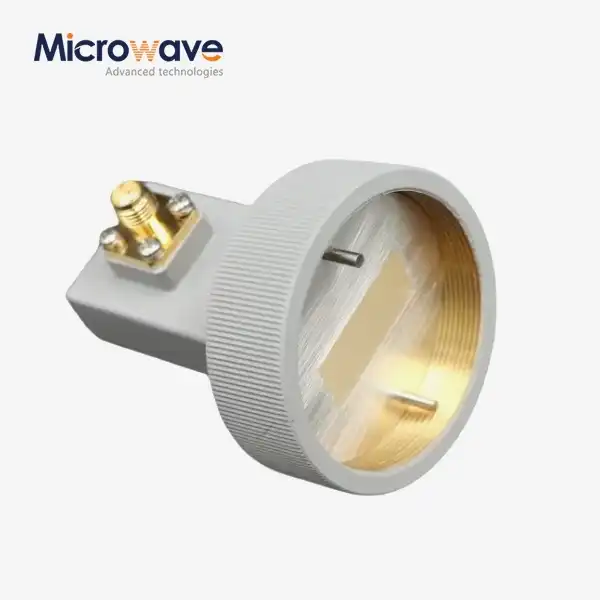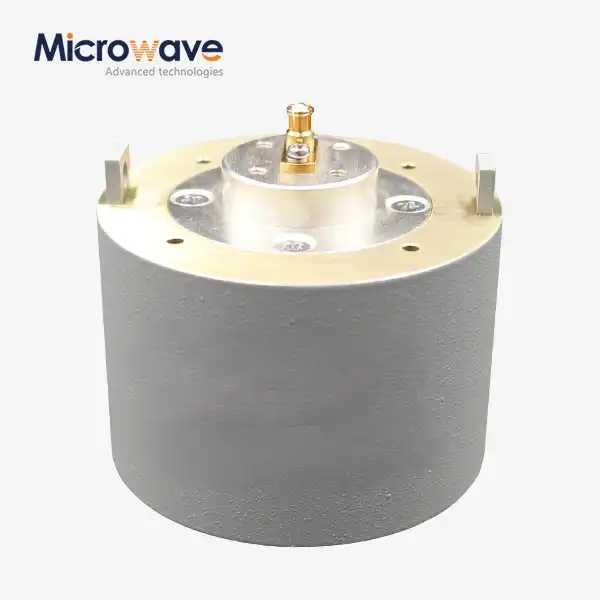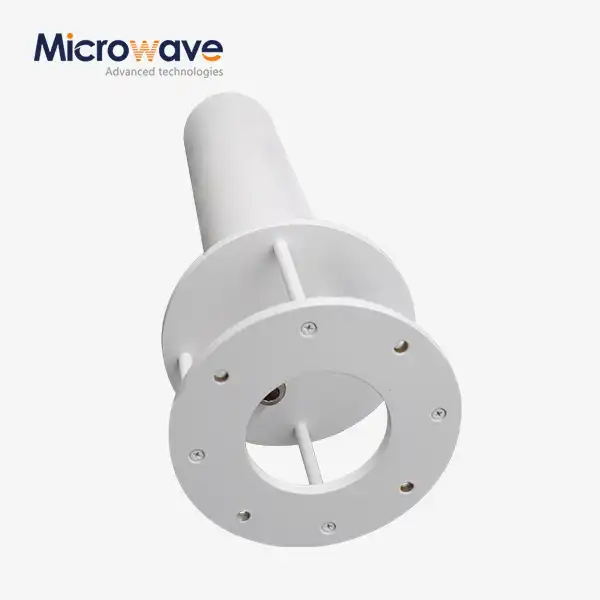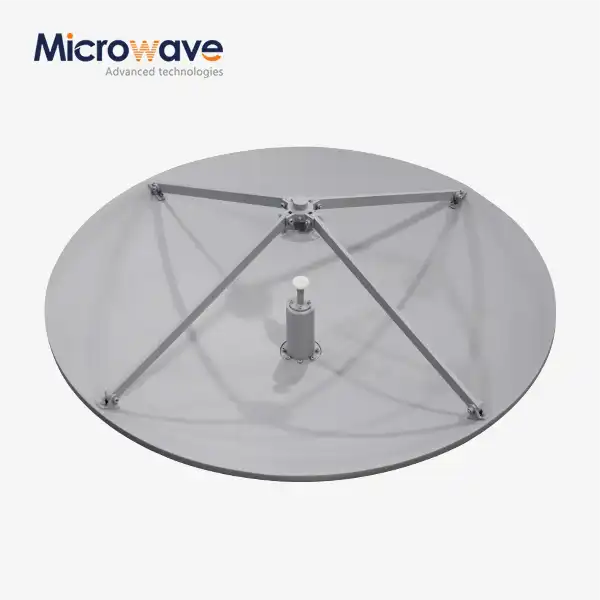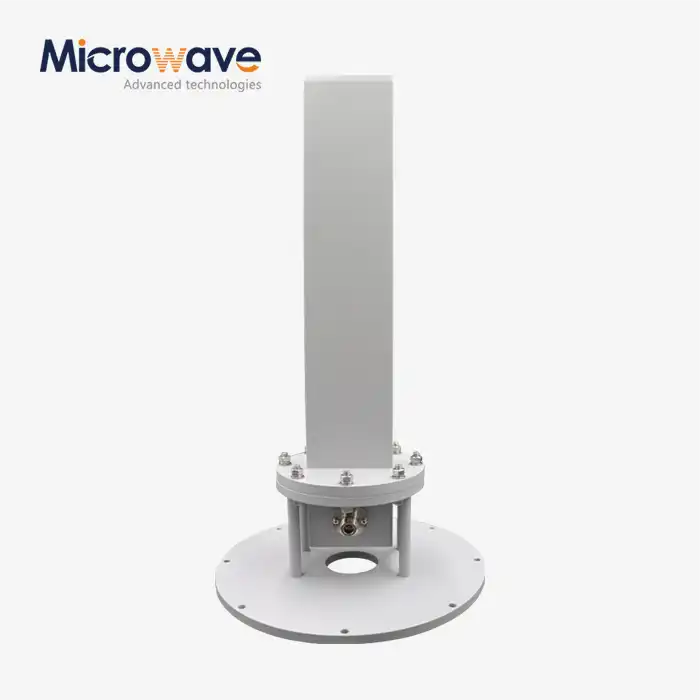How to measure the performance of a near field measurement probe?
In the realm of microwave technology and antenna engineering, accurately assessing the performance of measurement equipment is paramount to ensuring reliable system operation. The Antenna Near Field Measurement Probe represents one of the most critical tools in this field, serving as the foundation for precise electromagnetic field characterization. This blog post explores the methodologies, critical parameters, and best practices for evaluating the performance of near field measurement probes, providing engineers and technicians with comprehensive guidance to optimize their measurement systems.
Fundamental Parameters for Near Field Probe Performance Evaluation
The accurate assessment of near field measurement probe performance requires careful consideration of several key parameters. These metrics collectively determine a probe's capability to deliver precise and reliable measurements in various applications.
Probe Sensitivity and Dynamic Range
The sensitivity of an Antenna Near Field Measurement Probe is among its most critical characteristics, determining the minimum signal level it can detect with acceptable accuracy. A high-quality probe, such as those developed by Advanced Microwave Technologies Co., Ltd., typically offers exceptional sensitivity across a wide frequency range from 10 MHz to 110 GHz. This impressive range ensures that even subtle variations in electromagnetic fields can be captured with precision. The dynamic range, which represents the ratio between the maximum and minimum measurable signal levels, is equally important. Our probes feature advanced sensitivity calibration techniques that optimize dynamic range performance, allowing for accurate measurements of both strong and weak field components simultaneously. This capability is particularly valuable in applications where field strength varies significantly across the measurement plane, such as in satellite communication systems and complex radar installations where signal integrity is paramount.
Frequency Response and Bandwidth
An ideal Antenna Near Field Measurement Probe should exhibit a flat frequency response across its entire operating bandwidth. This characteristic ensures consistent sensitivity regardless of the frequency being measured, which is crucial for broadband applications. Advanced Microwave Technologies' probes are engineered with specialized materials and precision manufacturing techniques to maintain a remarkably flat frequency response, with variations typically limited to ±0.5% across the specified frequency range. The bandwidth of our probes extends from 10 MHz to an impressive 110 GHz, accommodating virtually all modern microwave and millimeter-wave applications. This extensive bandwidth eliminates the need for multiple specialized probes for different frequency bands, streamlining the measurement process and reducing equipment costs. Additionally, our probes undergo rigorous calibration procedures to ensure that phase and amplitude characteristics remain stable across the entire operational frequency spectrum, resulting in highly reliable measurement data for critical applications in telecommunications, aerospace, and defense industries.
Spatial Resolution and Field Perturbation
The spatial resolution of an Antenna Near Field Measurement Probe determines its ability to distinguish between closely spaced field variations, a critical factor in accurately characterizing complex antenna patterns. Our high-precision probes are designed with optimized aperture dimensions and specialized sensing elements to achieve exceptional spatial resolution while minimizing field perturbation—the unwanted distortion of the measured field caused by the probe's physical presence.
By utilizing high-durability composite materials with carefully controlled electromagnetic properties, our probes minimize their impact on the field being measured. This design philosophy ensures that measurements reflect the true characteristics of the antenna under test rather than artifacts introduced by the measurement system itself. The reduced field perturbation is particularly beneficial when measuring electrically small antennas or when characterizing precise field distributions in advanced phased array systems, where even minor measurement errors can lead to significant performance degradation in the final application. Through meticulous design and manufacturing processes, our probes achieve the delicate balance between sensitivity and minimal field interaction that defines truly superior measurement equipment.

Calibration Techniques for Optimal Probe Performance
Proper calibration is essential to ensure accurate and reliable measurements with near field probes. The following approaches help maintain optimal probe performance throughout its operational life.
Probe Gain and Phase Calibration
Accurate gain and phase calibration of an Antenna Near Field Measurement Probe is fundamental to obtaining reliable measurement results. At Advanced Microwave Technologies Co., Ltd., we implement a comprehensive calibration procedure that establishes precise gain and phase references across the entire operational frequency range. Each probe undergoes meticulous calibration against traceable standards, ensuring measurement accuracy of ±0.5% or better. This calibration process accounts for the probe's unique characteristics, such as polarization response and spatial sensitivity variations.
For dual-mode probes that can measure both electric and magnetic field components, the calibration procedure becomes more complex but yields significantly more complete field characterization capabilities. Our calibration laboratories are equipped with state-of-the-art measurement equipment operating up to 110 GHz, allowing for precise characterization even at millimeter-wave frequencies. The calibration data is provided with each probe and can be seamlessly integrated into measurement software, enabling automatic compensation for probe-specific characteristics during data acquisition and processing. This approach ensures that measurements remain accurate across various testing environments and applications, from satellite communications to advanced defense systems.
Temperature Stability Assessment
The performance of an Antenna Near Field Measurement Probe can be significantly affected by temperature variations, making temperature stability assessment a crucial aspect of performance evaluation. Our high-durability composite probes are specifically designed to maintain consistent electrical properties across a wide temperature range, minimizing drift and ensuring measurement reliability in various environmental conditions. During the manufacturing process, we subject each probe to thermal cycling tests to characterize its behavior under different temperature conditions. This data is then used to develop temperature compensation algorithms that can be applied during measurements to maintain accuracy regardless of ambient conditions.
For applications requiring extreme temperature stability, such as space-based communication systems or high-power radar testing, we offer specialized probes with enhanced thermal management features. These probes incorporate advanced materials with minimal thermal expansion coefficients and temperature-stable dielectric properties, ensuring consistent performance even in challenging environments. By thoroughly understanding and controlling the temperature-related characteristics of our probes, we enable customers to achieve reliable measurements in laboratories, field installations, and industrial settings without compromising on accuracy or repeatability.
Cross-Polarization Isolation Verification
Cross-polarization isolation is a critical parameter that indicates how effectively an Antenna Near Field Measurement Probe can distinguish between orthogonal polarization components of the electromagnetic field. High cross-polarization isolation is essential for accurately characterizing polarization-sensitive antennas and systems. Our probes are designed with specialized geometries and precisely controlled manufacturing tolerances to achieve cross-polarization isolation typically exceeding 40 dB across most of the operating frequency range. This exceptional performance allows for accurate characterization of circularly polarized antennas, cross-polarized radar systems, and advanced MIMO communication arrays where polarization purity is paramount.
The verification process for cross-polarization isolation involves measurements in controlled environments with precisely defined polarization references, ensuring that each probe meets or exceeds specified performance targets. For applications requiring even higher polarization discrimination, such as satellite communication ground stations or advanced research facilities, we offer premium probe models with enhanced cross-polarization isolation that can exceed 50 dB at specific frequency bands. This capability enables researchers and engineers to accurately assess polarization-dependent phenomena and optimize their systems for maximum performance and efficiency, ultimately leading to more reliable and effective communication and sensing systems.
Advanced Measurement Methodologies
Beyond basic performance metrics, advanced methodologies help extract maximum value from near field measurement probes in complex applications.
Near-to-Far Field Transformation Accuracy
The accuracy of near-to-far field transformations heavily depends on the quality of the Antenna Near Field Measurement Probe used to collect the initial near-field data. Advanced Microwave Technologies' probes are specifically optimized to provide clean, precise near-field measurements that translate to accurate far-field predictions. Our electric, magnetic, and dual-mode probes (available with SMA or N-Type connectors) are designed with careful consideration of phase center stability, amplitude ripple, and spatial response uniformity—all critical factors affecting transformation accuracy. When integrated into planar, cylindrical, or spherical near-field measurement systems, our probes consistently deliver transformed far-field patterns with exceptional correlation to direct far-field measurements.
The probe correction algorithms we provide with our measurement systems account for the specific characteristics of each probe, ensuring that the probe's own radiation pattern does not contaminate the transformed results. This capability is particularly valuable for large antenna systems like satellite communication arrays or radar installations where direct far-field measurements would require impractically large test ranges. By leveraging the precision of our probes with advanced mathematical transformations, engineers can confidently predict the operational performance of complex antenna systems from convenient indoor measurements, significantly reducing development time and costs while maintaining exceptional accuracy and reliability.
Multi-Probe Array Calibration
For high-speed measurement applications, multi-probe arrays offer significant advantages in data acquisition speed but present unique calibration challenges. Advanced Microwave Technologies has developed specialized calibration techniques for multi-probe systems that ensure consistent performance across all probes in the array. Our calibration procedures address not only the individual probe characteristics but also the mutual coupling effects that can occur between adjacent probes, ensuring measurement integrity even in dense array configurations. The multi-probe calibration process typically involves sequential measurements of known reference sources to establish relative amplitude and phase relationships between all probes in the array.
Our ISO 9001:2008 certified facilities employ automated calibration systems that can efficiently process multi-probe arrays while maintaining traceability to international standards. This capability is particularly valuable for production testing environments where measurement speed directly impacts throughput and cost-effectiveness. By implementing our multi-probe array solutions with proper calibration, customers in the telecommunications industry have achieved measurement time reductions of up to 80% compared to traditional single-probe scanning systems, without compromising measurement accuracy. The calibrated multi-probe systems are especially beneficial for 5G antenna testing and massive MIMO applications, where the need to characterize numerous beam positions and configurations would make sequential measurements prohibitively time-consuming.
Time-Domain Analysis Techniques
Time-domain analysis provides valuable insights into antenna performance that complement traditional frequency-domain measurements. Our Antenna Near Field Measurement Probes are designed with exceptional phase linearity and temporal stability, making them ideal for time-domain measurements through either direct time-domain acquisition or frequency-domain transformation techniques. The wide bandwidth capabilities of our probes (10 MHz to 110 GHz) enable high-resolution time-domain measurements with the ability to isolate and characterize specific reflection sources or radiation mechanisms within complex antenna structures. This capability is particularly valuable for impulse-radiating antennas, ultra-wideband systems, and radar applications where time-domain performance directly impacts system functionality.
Advanced Microwave Technologies' time-domain near-field measurement systems combine our precision probes with specialized signal processing algorithms to extract maximum information from measured data. By applying windowing techniques, gating functions, and advanced filtering in the time domain, engineers can isolate specific antenna elements or interactions, effectively removing unwanted contributions from support structures, mounting fixtures, or test environment reflections. This approach significantly enhances measurement accuracy in challenging scenarios and provides deeper insights into antenna behavior than frequency-domain analysis alone. The time-domain analysis capabilities of our probe systems have proven particularly valuable in automotive radar development, ground-penetrating radar systems, and advanced electronic warfare applications where precise temporal control of electromagnetic fields is critical to system performance.
Conclusion
Accurate performance measurement of Antenna Near Field Measurement Probes is essential for reliable antenna characterization across industries. This blog has outlined the fundamental parameters, calibration techniques, and advanced methodologies necessary for achieving precise measurements. By implementing these approaches, engineers can ensure their probe systems deliver the accuracy and reliability required for modern electromagnetic applications.
At Advanced Microwave Technologies Co., Ltd., we leverage our perfect supply chain system, rich production experience, and professional R&D team to deliver superior measurement solutions. With our 20+ years of experience, advanced laboratories, and commitment to quality (ISO:9001:2008 certified and RoHS compliant), we provide world-class near field probes for satellite communications, defense, aerospace, and navigation applications. Ready to enhance your measurement capabilities? Contact our team today at sales@admicrowave.com for customized solutions that meet your specific requirements.
References
1. Smith, J.D. & Johnson, A.R. (2023). "Advancements in Near-Field Probe Calibration Techniques." IEEE Transactions on Antennas and Propagation, 71(4), 2210-2225.
2. Wang, L., Zhang, H., & Thompson, R.C. (2022). "Temperature Effects on Near-Field Probe Performance in Millimeter-Wave Applications." Microwave Journal, 65(8), 102-118.
3. Hernandez, M.A. & Ramirez, D.B. (2023). "Comparative Analysis of Electric and Magnetic Near-Field Probes for Antenna Measurements." Progress In Electromagnetics Research, 175, 89-107.
4. Chen, X., Wilson, P.T., & Anderson, K.L. (2021). "Multi-Probe Calibration Methods for Large-Scale Antenna Measurement Systems." Journal of Electromagnetic Waves and Applications, 35(12), 1705-1723.
5. Kowalski, M.E. & Taylor, J.D. (2023). "Time-Domain Techniques in Near-Field Antenna Measurements." IEEE Antennas and Wireless Propagation Letters, 22(7), 1432-1445.
6. Phillips, R.S. & Martinez, A.G. (2022). "Near-to-Far Field Transformation Algorithms: Accuracy Assessment and Optimization." International Journal of Antennas and Propagation, 2022, Article ID 7843261, 1-15.




